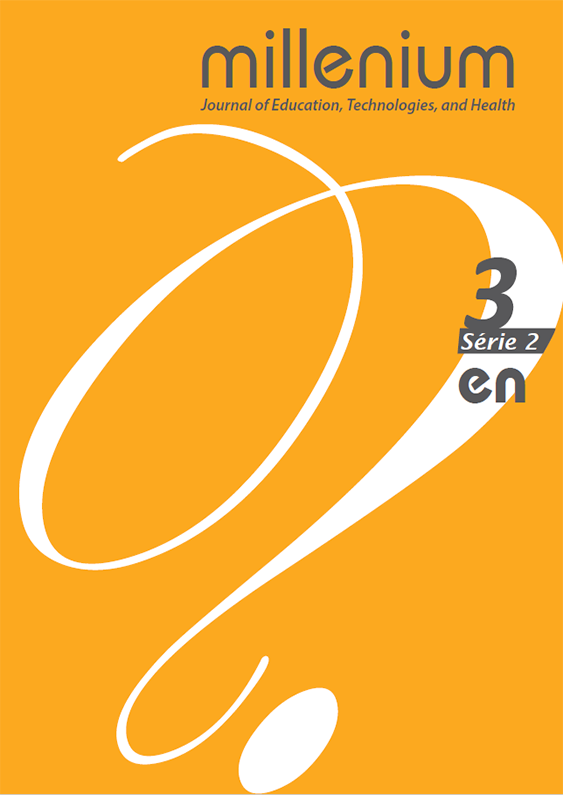Are we prepared to develop palliative actions in a ward? A literature review
DOI:
https://doi.org/10.29352/mill0203.06.00134Keywords:
Nursing, Palliative care, Acute hospital settingAbstract
Introduction: The World Health Organization (2015) presents as barriers to improving access to palliative care the lack of training and awareness of health professionals.
Objectives: Identify the preparation of nurses who provide care, in the acute hospital setting, to develop palliative actions.
Methods: Integrative literature review, through the electronic research in the B-ON platform, using the expression: (nursing) AND (palliative care) AND (acute hospital setting) NOT (child* OR infant* OR adolescent*), obtaining six articles of primary studies.
Results: Obtained studies are representative of a total of 2220 nurses. The articles showed that nurses from acute hospitals, despite being able to care for patients with palliative care needs, felt that training in this area would be important in order to better understand the needs of these patients.
Conclusion: Nurses consider that they have competencies to provide care related to palliative care in acute care, although recognizing that they should be provided with more formation.
Downloads
References
Administração Central do Sistema de Saúde, IP (2016). Monitorização Mensal RNCCI – Fevereiro de 2016 [em linha]. Administração Central do Sistema de Saúde, IP Web site. Acedido em março de 2016, em http://www.acss.min-saude.pt/Portals/0/Indicadores%20Mensais_fevereiro%202016.pdf.
Arantzamendi, M., Addington-Hall, J., Saracibar, M. & Richardson, A. (2012). Spanish nurses’ preparedness to care for hospitalised terminally ill patients and their daily approach to caring. International Journal of Palliative Nursing, 18(12), 597–605.
Associação Portuguesa de Cuidados Paliativos. (2006). Formação de Enfermeiros em Cuidados Paliativos: Recomendações da APCP.
Bergenholtz, H., Jarlbaek, L. & Hølge-hazelton, B. (2015). The culture of general palliative nursing care in medical departments: An ethnographic study. International Journal of Palliative Nursing, 21(4), 193–202.
Bloomer, M. J., Endacott, R., O’Connor, M. & Cross, W. (2013). The “dis-ease” of dying: challenges in nursing care of the dying in the acute hospital setting. A qualitative observational study. Palliative Medicine, 27(8), 757–764.
Capelas, M. & Neto, I. (2010). Organização de Serviços. In Manual de Cuidados Paliativos (2a Edição, pp. 785–814). Lisboa: Centro de Bioética da Faculdade de Medicina de Lisboa.
Clark, K., Curry, T. & Byfieldt, N. (2015). The effect of a care bundle on nursing staff when caring for the dying. International Journal of Palliative Nursing, 21(8), 392–398.
Conselho Internacional de Enfermeiros (2000). Tomada de Posição do CIE: O papel dos enfermeiros na prestação de cuidados aos doentes terminais e suas famílias.
Direção Geral de Saúde (2008). Proposta de Revisão do Programa Nacional de Cuidados Paliativos (2008-2016).
European Association for Palliative Care (2004). A Guide for the Development of Palliative Nurse Education In Europe. Itália: European Association for Palliative Care.
European Association for Palliative Care. (2009). Carta de Praga [em linha]. European Association for Palliative Care. Web site. Acedido em fevereiro de 2016, em http://www.eapcnet.eu/Themes/Policy/PragueCharter.aspx.
Fedel, P., Joosse, L. L. & Jeske, L. (2014). Use of the palliative performance scale version 2 in obtaining palliative care consults. Journal of Clinical Nursing, 23(13-14), 2012–2021.
Gagnon, J. & Duggleby, W. (2014). The provision of end-of-life care by medical-surgical nurses working in acute care: A literature review. Palliative & Supportive Care, 12(5), 393-408.
Gardiner, C. et al. (2012). Extent of palliative care need in the acute hospital setting: A survey of two acute hospitals in the UK. Palliative Medicine, 27(1), 76-83.
Higgins, I., van der Riet, P., Sneesby, L. & Good, P. (2014). Nutrition and hydration in dying patients: The perceptions of acute care nurses. Journal of Clinical Nursing, 23(17-18), 2609–2617.
Johansson, K. & Lindahl, B. (2012). Moving between rooms - moving between life and death: Nurses’ experiences of caring for terminally ill patients in hospitals. Journal of Clinical Nursing, 21(13-14), 2034–2043.
Instituto Nacional de Estatística (2014). Principais indicadores [em linha]. Instituto Nacional de Estatística Web site. Acedido em fevereiro de 2016, em https://www.ine.pt/xportal/xmain?xpgid=ine_main&xpid=INE
Lei n.o 52/2012 de 5 de Setembro. Diário da República n.º 172/2012 – I Serie. Lisboa.
McCourt, R., James Power, J. & Glackin, M. (2013). General nurses’ experiences of end-of-life care in the acute hospital setting: a literature review. International Journal of Palliative Nursing, 19(10), 510–516.
Milligan, S. (2012). Optimising palliative and end of life care in hospital. Nursing Standard, 26(41), 48–56.
Ordem dos Enfermeiros. (2005). Código deontológico dos enfermeiros: dos comentários à análise de casos. Lisboa: Edição Ordem dos Enfermeiros.
Organização Mundial de Saúde. (2015). Palliative Care [em linha]. World Health Organization Web site. Acedido em fevereiro de 2016, em http://www.who.int/mediacentre/factsheets/fs402/en/.
Regulamento n.o 188/2015 de 22 de abril. Diário da República n.º78/2015 - Parte E. Ordem dos Enfermeiros.
Robinson, J., Gott, M. & Ingleton, C. (2014). Patient and family experiences of palliative care in hospital: what do we know? An integrative review. Palliative Medicine, 28(1), 18–33.
Whittemore, R., & Knafl, K. (2005). The integrative review: update methodology. Journal of Advanced Nursing, 52(5), 546–553.
Downloads
Published
How to Cite
Issue
Section
License
Authors who submit proposals for this journal agree to the following terms:
a) Articles are published under the Licença Creative Commons (CC BY 4.0), in full open-access, without any cost or fees of any kind to the author or the reader;
b) The authors retain copyright and grant the journal right of first publication, allowing the free sharing of work, provided it is correctly attributed the authorship and initial publication in this journal;
c) The authors are permitted to take on additional contracts separately for non-exclusive distribution of the version of the work published in this journal (eg, post it to an institutional repository or as a book), with an acknowledgment of its initial publication in this journal;
d) Authors are permitted and encouraged to publish and distribute their work online (eg, in institutional repositories or on their website) as it can lead to productive exchanges, as well as increase the impact and citation of published work
Documents required for submission
Article template (Editable format)





